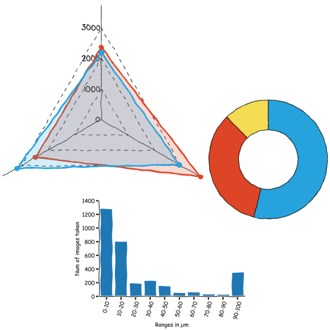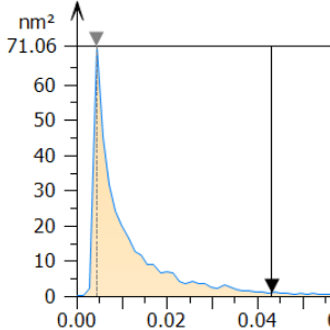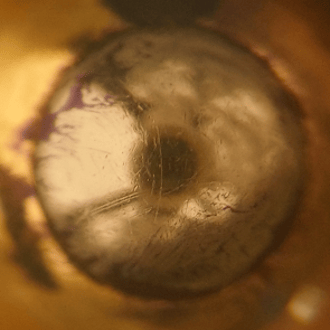Discover the capabilities of WaveMode AFM in characterizing bottlebrush polymers with unprecedented detail and speed, ...

The ultimate tool for nanoscale research from biological molecules to advanced new materials.
The versatile mid-range research AFM that grows with your demands in modes and accessories.
A compact affordable research AFM that is astoundingly easy to use, with more than 30 modes and options.
Fastest reliable sub-Angstrom surface roughness metrology.
Bringing the power of DriveAFM to a wafer metrology system purpose-built for the requirements of the semiconductor industry.
Measure roughness and other material properties of heavy and large samples up to 300 mm and 45 kg.
For unique requirements, we will design a bespoke AFM solution, leveraging our decades of engineering expertise.
Slide an AFM onto your upright optical microscope turret for a leap in resolution.
One of the smallest ever AFMs, created for integration into custom stages or existing setups.
A flexibly mountable research-grade scan head for integration into custom stages or existing set ups.
What is atomic force microscopy (AFM)? How does AFM work? What AFM modes do I really need? How do I get started with AFM?
Learn how AFM works with cantilever/tip assembly interacting with the sample. Explore CleanDrive technology, calibration methods, and feedback principles for precise nanoscale imaging.
An overview of common AFM modes. To learn about each mode in more detail and see application, view the full article.
We regularly publish detailed reviews providing practical guidance and theoretical background on various AFM applications.
Read detailed technical descriptions about selected AFM techniques and learn how to perform specific measurements on Nanosurf instruments.
A library of links to research papers in which Nanosurf instruments were used.
Learn AFM from our library of recorded webinars, covering different measurement techniques, modes, and areas of application.
Short video clips explaining how to perform different operations on Nanosurf instruments.
Watch a product demonstration to learn about the capabilities of our AFMs.
Short videos of our AFMs.
Browse news articles, press releases and a variety of other articles all around Nanosurf
Browse Héctor Corte-Léon's weekly experiments, for inspiration, entertainment, and to discover everyday applications of AFM.
Read the introduction to the comprehensive white paper on electrical AFM modes here on Nanosurf Insights. Download the full whitepaper here.
The advent of electrical Atomic Force Microscopy (AFM) modes has revolutionized the world of nanoscale analysis. These techniques have unlocked new possibilities for measuring electrical properties with remarkable precision. From Conductive AFM (C-AFM) to Kelvin Probe Force Microscopy (KPFM) and Piezoresponse Force Microscopy (PFM), these modes have found extensive applications across diverse industries such as semiconductor technology, materials science, energy storage, and life sciences. This article provides a comprehensive overview of the history, principles, and applications of electrical AFM modes, highlighting their crucial role in enhancing our understanding of materials and devices at the nanoscale.
The journey of electrical AFM modes began in the late 1980s and early 1990s, following the invention of the AFM in 1986. These modes have evolved to measure a wide array of electrical properties, including conductivity, surface potential, and piezoelectric response, among others. The operational principle of electrical AFM modes mirrors that of the basic AFM: a sharp probe approaches a sample surface, and the interactions between the probe and the sample are measured. However, in electrical AFM modes, an additional bias voltage is applied either to the probe or the sample, and the resulting electrical response is measured. This response can manifest as a current, a force, or a displacement, depending on the specific mode.
Electrical AFM modes, including C-AFM/SSRM, KPFM, PFM, EFM, and SMM as well as MFM have found extensive applications in various industries, contributing significantly to our understanding of nanoscale electrical properties.

In the semiconductor industry, electrical AFM modes, particularly C-AFM/SSRM, KPFM, and SMM, are indispensable. For device characterization and material analysis, C-AFM/SSRM is used to investigate the conductivity of nanoscale transistors, leading to the development of ultra-low power transistors. Meanwhile, KPFM provides insights into the distribution of energy levels across the surface of semiconductor materials, aiding in refining the fabrication processes. SMM, on the other hand, offers unique capabilities for non-destructive characterization of subsurface structures, crucial for quality control and failure analysis. This has helped improve the overall yield of semiconductor production lines.
PFM, EFM, SMM and MFM are extensively employed in materials science for exploring novel materials. PFM has been crucial in studying the piezoelectric properties of polymers, leading to the development of high-performance piezoelectric sensors and actuators. EFM aids in understanding
the charge trapping phenomenon in organic semiconductors, improving the stability of these materials. SMM, with its ability to probe local dielectric properties, has been instrumental in characterizing complex materials systems, such as multiferroics and ferroelectric thin films. This led to the development of novel multifunctional devices. MFM helps understanding magnetic domain arrangements and changes and is indispensable for investigation of nanoscale magnetic structures in novel materials.
C-AFM and SMM have emerged as powerful tools in the energy sector. C-AFM has been employed to analyze the conductivity and ion transport properties in the solid electrolytes of next-generation lithium-ion batteries. This played a key role in the development of safer and more efficient lithium-ion batteries. SMM, with its capability to investigate dielectric properties, aids in understanding material behavior under real operating conditions, leading to the design of more robust and efficient fuel cells.
Electrical AFM modes, including C-AFM and SMM, have found unique applications in the field of life sciences. C-AFM, for example, has been used to study the electrical conductivity of neurons, enhancing our understanding of neural communication at a cellular level and facilitating the development of advanced neuroprosthetics. SMM, with its ability to measure local permittivity, has provided new insights into cellular processes, advancing our knowledge of biomaterials and biological systems, and aiding the development of advanced drugs and treatments.

Electrical AFM modes such as MFM, C-AFM, and SMM have proven invaluable in the development of advanced data storage technologies. MFM has been used to study the nanoscale magnetic domains in hard disk drives, leading to significant increases in storage density. C-AFM has been employed in the investigation of the electrical properties of magnetic recording media, while SMM, with its ability to probe subsurface features, offers unique advantages in the characterization of memory devices. This has contributed to the development of next-generation high-density storage systems, including advanced solid-state drives with improved reliability and data retention properties.
Get access to the full white paper - no email or form submission required.

28.10.2025
Discover the capabilities of WaveMode AFM in characterizing bottlebrush polymers with unprecedented detail and speed, ...

27.10.2025
Read this blog and discover advanced alloy engineering and cutting-edge AFM techniques for high-resolution, ...

14.10.2025
Discover how WaveMode technology resolves the tobacco mosaic virus structure under physiological conditions with ...

11.07.2024
FridayAFM: learn how to perform datamining on large sets of AFM data.

02.07.2024
FridayAFM: learn how to automatize data analysis in MountainsSPIP

26.06.2024
FridayAFM: learn how AFM makes possible modern ball point pens.
Interested in learning more? If you have any questions, please reach out to us, and speak to an AFM expert.
